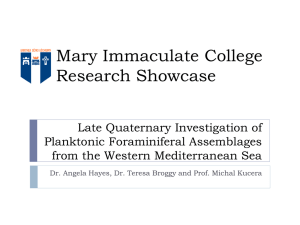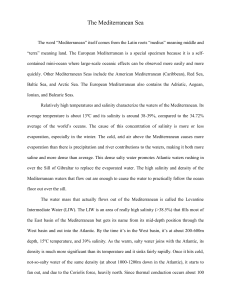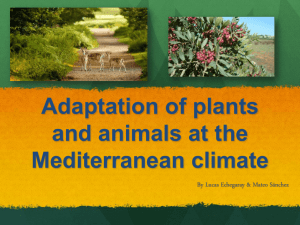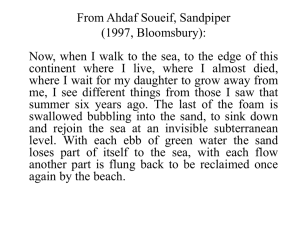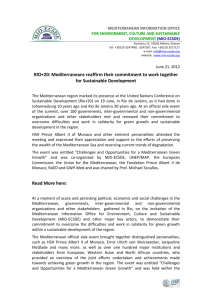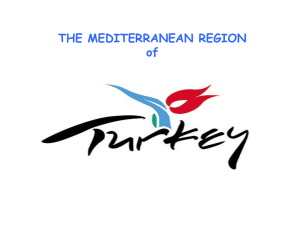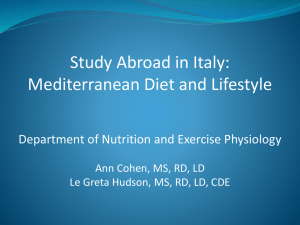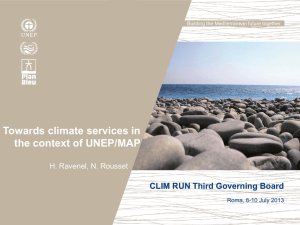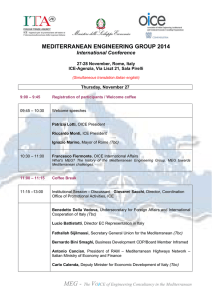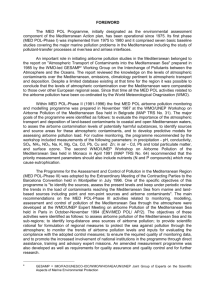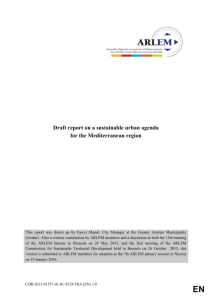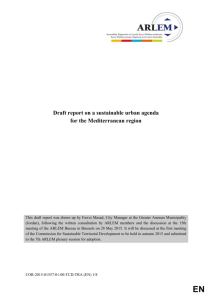Languages of the Mediterranean
advertisement
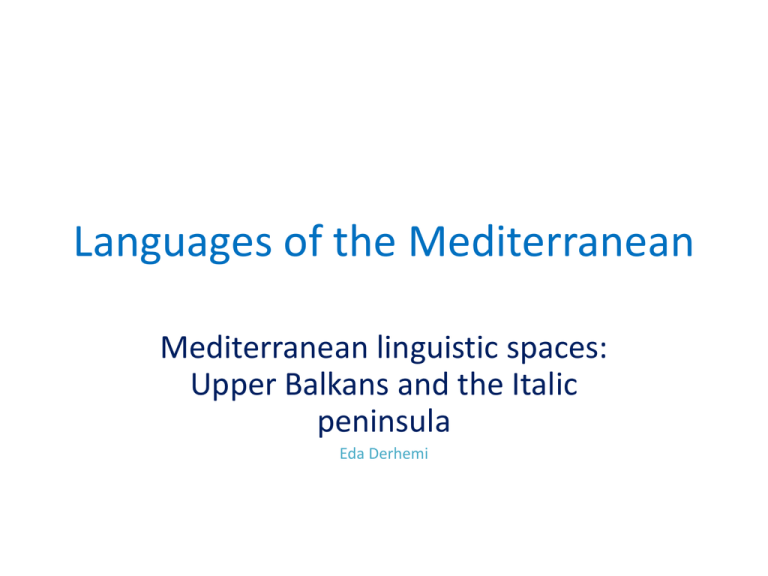
Languages of the Mediterranean Mediterranean linguistic spaces: Upper Balkans and the Italic peninsula Eda Derhemi The Mediterranean area: three main points of the presentation and the area I discuss 1. Against an essentialist approach of the Mediterranean 2. Mediterranean as a contested space 3. Mediterranean: ideal space for communication but also isolation, innovations but also conservatism “Mediterraneo” – 1991 film of Gabriele Salvatores • Italiani, turchi: una faccia, una razza! [Italians, Turks: one face, one race/kind] In 1941, a group of Italian soldiers are forgotten (on duty) on a Greek island in the Aegean sea. They are absorbed into the life, heat and landscape of the island and are able to return to Italy only after WWII. The excerpt shows the moment they encounter Aziz, a Turk who comes to the island in a small boat. They smoke hashish together. Aziz seems not to know much about the war. At last the Italians realize that Aziz has stolen all their weapons in order to sell them. This excerpt will be referred to more than once during the presentation. Focus on the use of the aphorism “Una faccia, una razza” at the beginning and the end of this excerpt. http://www.youtube.com/watch?v=S8kfPlXxIrE 0:40-Antalia 5-5:20 6-end 1. Against an essentialist approach to the Mediterranean • Analysis of the concept of Mediterranean “race” vs. Mediterranean language • From ‘Frankish’ or ‘Sabir’ to Mussolini • Appearing harmless in all the languages of the area (as “kind”, “type”), the concept of Mediterranean “race” is a concept socially constructed and used for political purposes 2. The Mediterranean as a contested space: the case of the Balkan coast • “the most ancient language of all”- from exclusion to a desperate search for centrality • The symbolic hierarchy of alphabets • Toponymy war and linguistic purism • Language proliferation Socialist Federal Republic of Yugoslavia and Marshal Tito Linguistic map of ex-Yugoslavia – Trudgill: “75% spoke Serbo-Croatian” National Geographic map of 1990 Excellent reading: many languages or our language? “Mare Nostrum” again? http://www.rferl.org/content/Serbian_Croatian_Bosnian_or_Montenegrin_Many _In_Balkans_Just_Call_It_Our_Language_/1497105.html 3. Mediterranean: ideal space for communication but also isolation; innovation but also conservatism Civita di Bagnoregio (Lazio) an Etruscan town continuously inhabited from 8th BC – hypothesis of “la gorgia toscana” ‘k’ vs ‘kh’ (la casa> la hasa) Veneto, Sardinia and Sicily • The story of the Lion of Piraeus who carries on his back Athens, Turkey, Venice, Scandinavia and more • Sardinia: conservatism of the varieties; short vowels ‘I’ and ‘u’ of the Old Latin still alive; Punic word ‘zippiri’ • Sicily- layers of living old influences: Arabic and Norman/Gallo-Italic French • Siculo-Arabic in Malta The story of the Lion of Piraeus The Arsenal of Venezia The runic inscription on the lions shoulder A replica of the Lion in the Port of Piraeus (Athens) today RUNES, Scandinavia and Rhaetia The Runic alphabet used in Germanic languages after II century AD A Rune stone in Sweden from 11th century (age similar to that of the Lion’s inscription) Sardinia and Sicily Kitab-Ä Bahriye (Book of Navigation) of Piri Reis Sicilian differences from the rest of the dialect continuum • • • • • • • Sicilian Accattari Addumari Custureri Racina Rinauda Travaghiari Italian comprare accendere sarto uva volpe lavorare French acheter allumer (retroflex ‘d’) couturier raisin renard travailler English buy turn on tailor grape fox work ARABIC Toponymy • Marsala (Marsa= port), Misilmeri, da Menzel-el-Emir ()منزل األمير (villaggio dell'Emiro), • all the Sicilian cities with ‘cal’, like Caltanisetta, Calatafimi, Caltavuturo etc, where Qal’a = castle/fortress in Arabic); Final point: Overlooked features of the Mediterranean linguistic space Catalan map of the Mediterranean: 1375 1. Besides the linguistic influences from the sea, those from the land are also significant molders of the existing Mediterranean languages, history and culture; 2. Interconnection and innovations have co-existed with linguistic isolation and conservatism; 3. Mediterranean solidarity is not more recurring than Mediterranean animosity; 4. The Southern Mediterranean (non-European) influence on the Mediterranean linguistic and cultural space is very significant;
